How Many Glasses Come in a Case of Old Fashioned Glasses?
This updated mail was originally published on 9/25/2020
You've probably noticed the cool sake cups, carafes, and service vessels that beautify the sake experience. As the sake journey deepens, more than types and styles reveal themselves. This guide is designed to help you find your new favorite loving cup.
The first office of this commodity will teach you lot nigh the about of import traditional sake cups and flasks. I also cover modern sake glass alternatives.
The 2d department is all about the design of cups and spectacles. The shape, size, and material of a sake vessel affect the olfactory property, flavor, and ideal serving temperature. By the end, you'll know what type of cup is right for y'all.
I've also curated a list of some of the best sake cups and glasses available from my affiliate advertisers. I may earn commissions on qualifying purchases through these links.
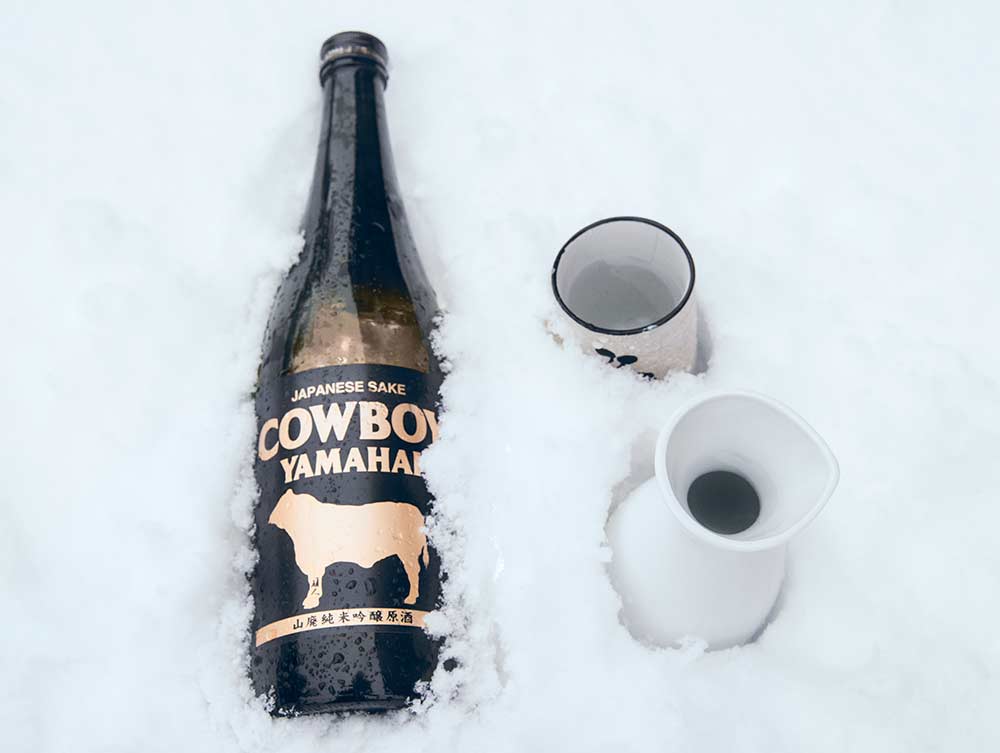
Traditional Sake Cups and Carafes
Sake, or seishu, has a long and evolving history in Japan and is deeply rooted in its civilisation. A bunch of cups and glasses evolved forth with it.
Dissimilar drinking experiences take resulted in a variety of cup designs.
Some styles are for ceremonial apply. Other types of spectacles are ideal for hot or cold sake. Finally, professional tasters and brewers have developed glassware to maximize aroma and flavor.
Below are the most common types of traditional cups and glasses that you'll find in izakayas, sake confined, shops, and online.
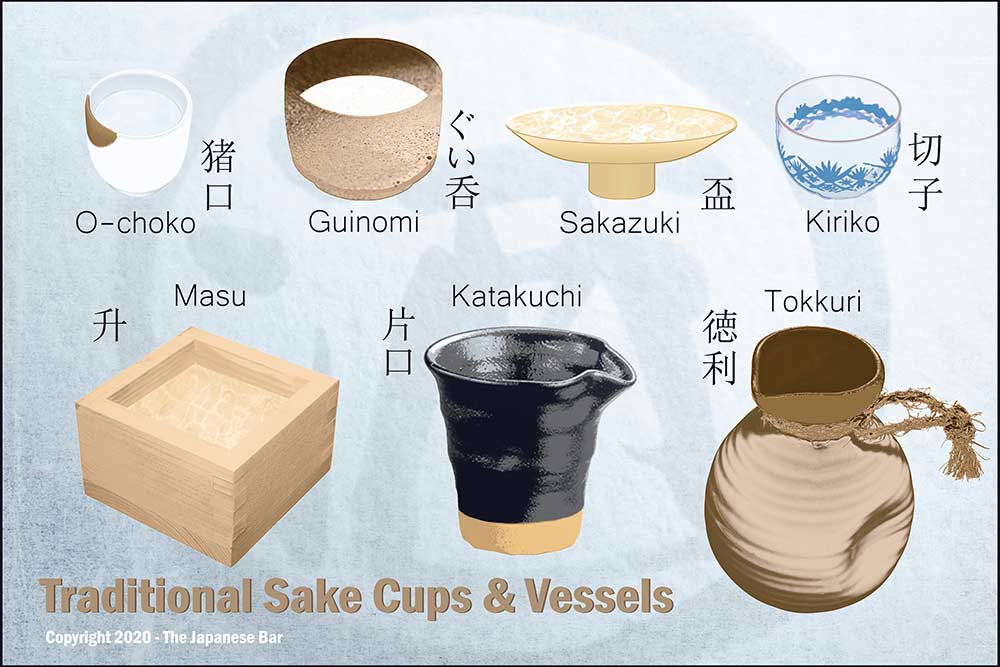
The Ochoko: the Most Popular Sake Cup
The ubiquitous ochoko (猪口, ちょこ) is the most common sake cup type. They are generally smaller cups, while larger examples are considered guinomi. The average volume of an ochoko is around 1.five oz (45 mL), though some are smaller.
Ochoko have a traditional feel and aesthetic that most sake fans appreciate. They're just neat accommodating sake cups.
They also make a great choice of sake glassware for izakaya, sushi restaurants, or Japanese confined due to a trend to be durable, affordable, and estrus-tolerant.
How to Say Ochoko
(oh choh koh) –
Types of Ochoko
Porcelain and stoneware are the two nearly common materials used to make ochoko. Drinking glass, woods, and metal designs are likewise made but are less common.
The most affordable ochoko are typically made from porcelain. They're as well durable and can handle even the hottest sake. Stoneware ochoko tend to be more than fragile, merely they experience great in your paw.
Drinking Sake from Ochoko
Ochoko tend to make sake taste more subdued, lite, and sugariness when compared to larger types of cups.
Their small size is the reason ochoko produce a (relatively) mellow tasting experience.
The olfactory property of a sake will seem restrained because they typically have a small opening, lack of headspace, and limited volume.
The narrow opening also concentrates sake on the front of your palate. This tends to mask acidity, which enhances the perception of sugariness.
Ochoko ofttimes come up in sets with a matched carafe (tokkuri). These sake sets are great for serving hot sake or for entertaining.
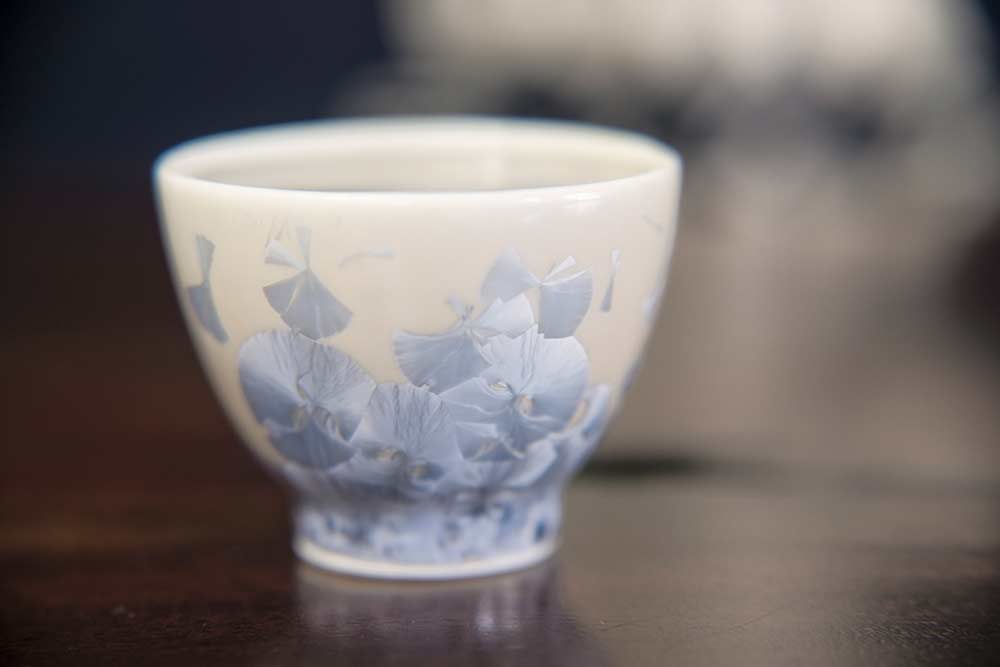
Store Ochoko Sake Cups

Guinomi: Big Sake Cups
Guinomi (ぐい呑) are generally larger in size than ochoko with a heavier feel. Superficially, these two traditional sake cups look similar.
But cup size matters when it comes to the flavour and aroma of sake. So the same sake served in a guinomi will seem a trivial different in an ochoko.
In that location's no standard size for guinomi. Merely they'll typically hold more 2 oz (60 mL) of sake.
How to Say Guinomi
(gwee noh mee) –
Types of Guinomi
Guinomi are ofttimes fabricated of stoneware or porcelain. But other mediums are likewise used like drinking glass, metal, and wood.
Handmade traditional yakimono guinomi are some of the about interesting drinking vessels in existence. And they're great for sake and shochu. The finest examples can also be expensive.
Compared to ochoko, guinomi are more than likely to be sold individually than in sets. Sake sets with tokkuri and guinomi do be if you look difficult enough.
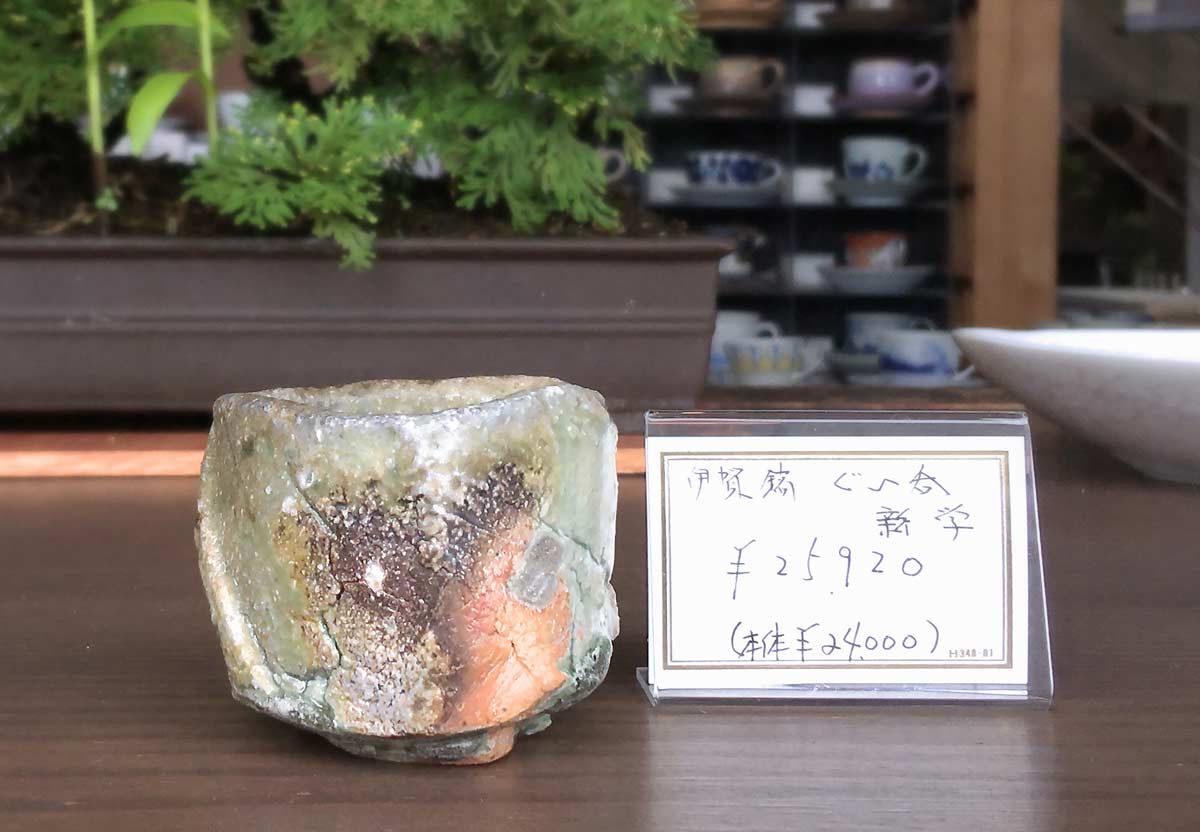
Drinking Sake from a Guinomi
The larger size of guinomi impacts the odor and flavor of sake in several means.
A large amount of sake can be held inside with more surface expanse and volume to emit olfactory property. And, unless you're filling your guinomi to the top, at that place will be more headspace than with an ochoko.
This headspace captures aromatic components for longer before they are diddled away by currents of air. Both of these qualities permit the taster to better appreciate the aromas in sake.
The size of the opening is another component that affects how your sake tastes and smells. The wider mouth (vs. ochoko) tin present sake beyond the whole palette more than easily. This typically leads to the sake'southward acerbity being more prominent.
And one characteristic of increasing acidity is the decrease in perceived sweetness.
Merely equally with ochoko, guinomi are not uniform in shape and size. Then the above characteristics are generalizations.

Store Guinomi Sake Cups


Janome: Professional Sake Tasting Cups
A janome (蛇の目) translates to snake eye and is also chosen kiki-choko (利き猪口, きき猪口). The ophidian eye refers to a blue bullseye, double-ring design on the inside lesser of the cup.
Janome are a sub-style of ochoko and guinomi. They vary in size, from consumer-focused 36 ml o-choko to large guinomi.
How to Say Janome
(jah noh meh) –
Types of Janome
White porcelain janome are the most common blazon. But there are mod designs that utilize glass.
Drinking from a Janome
Professional tasters and brewers adult the kiki-choko. Kiki refers to the human action of analyzing a sake's appearance, aroma, and flavour.
Sake brewers (toji) apply large, 6 oz (180 ml) janome for the sampling of unbottled seishu. Soy sauce brewers do as well. Sake sommeliers (kikisake-shi) and judges ofttimes use this size for evaluation in competitions.
The blueish circles at the bottom of the cup allow the taster to check for clarity and colour in the sake.
If you're looking for a sake cup that gives you a traditional feel but also want a complete tasting experience: the janome is a great choice.

Store Janome / Kiki-choko Sake Cups
The Sakazuki Cup: Formalism Sake Ware
The sakazuki (盃) is an aboriginal style of sake cup that'southward often used ceremonially. Shinto weddings usually incorporate sakazuki.
A wide and fluted design is the classic shape. Some only concur a few sips, though bigger examples exist.
Confusingly, the term sakazuki is sometimes used generically for sake cups.
How to Say Sakazuki
(sah kah zuu kee) –
Types of Sakazuki
Like the ochoko and guinomi, sakazuki are fabricated from a variety of materials. Stoneware and porcelain are probably the most common, but lacquered forest and metal (gold, silver, tin) examples are made besides.
Drinking Sake with a Sakazuki
The wide rima oris of the sakazuki presents a big surface expanse for the detection of aroma. However, a limited capacity, short headspace, and an outwardly fluted shape don't permit for the recruitment of many aromatic compounds.
Larger and deeper sakazuki will mitigate some of these impacts, simply this may not be the best sake loving cup choice if you place actress value on the bouquet of your sake.
Many sakazuki don't have much of a lip either. When combined with the severe angle at which 1 drinks from them, sakazuki are not e'er the best choice for hot sake. At that place are exceptions to this, of grade, depending upon the specific blueprint.
Traditionally, i uses both hands when drinking from a sakazuki cup. One hand is underneath and the other holds the side.
Overall, sakazuki are i of the more interesting styles of sake glassware. They may non be the best for deductive tasting, merely they make up for it with soul.
Information technology's hard not to feel reverential towards sake, the brewers, your loved ones, and life itself when enjoying quality seishu in a traditional sakazuki.
Shop Sakazuki Cups

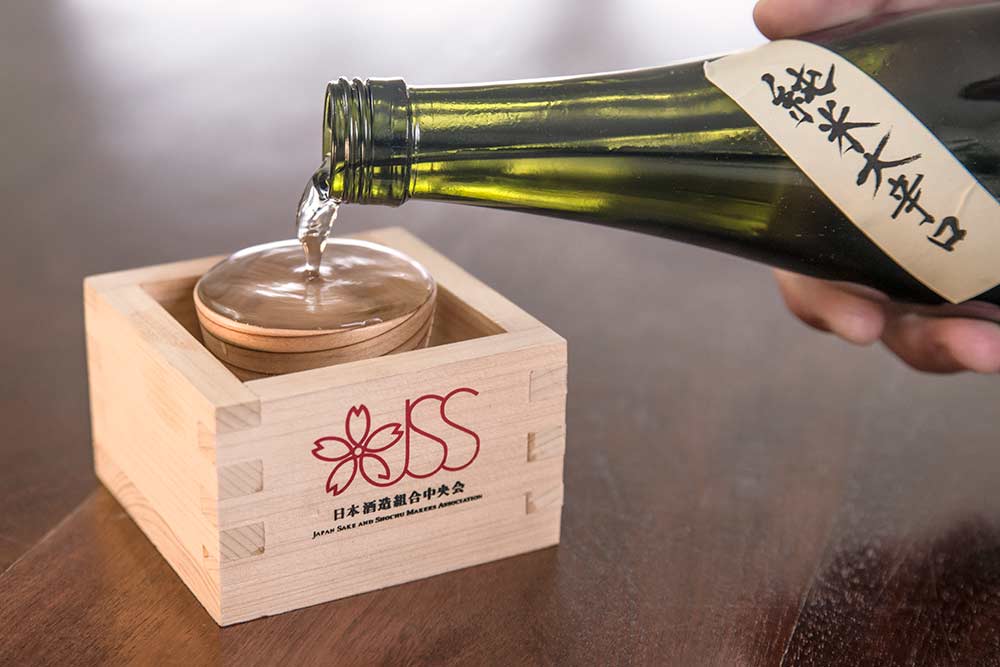
Masu: Wooden Sake Box
The masu (升) is a wooden cup that was used historically as a rice measuring tool. This practice occurred for over a thousand years of Japan'due south feudal past.
Masu were used for drinking sake as well. Today, this is the about common use.
Masu come in diverse sizes, which correspond to different sizes in sake bottles. The most common book is 6 oz (180 mL), which is called ichigo (一合).
How to Say Masu
(mah suu) –
Types of Masu
Hinoki (檜, 桧, or ヒノキ), or Japanese cypress, is the most common material for masu. Nigh of this hinoki comes from Ogaki-shi, Gifu.
Lacquered masu are fabricated, likewise. But these aren't almost as common.
Drinking from a Masu
Sake in a hinoki masu will take on some of the flavors of the wood. The evergreen, floral, and citrusy aromas are highly prized and soothing. All the same, this perfumed aroma can likewise mask the sake's innate bouquet.
Lacquered masu won't accept the heavy hinoki scent and season.
The large volume of the average masu does agree sake aromas well. Combined with the odour from the hinoki forest, a masu can provide a fragrant sake feel.
A common way to serve sake in a masu is with a sake glass inside the box.
Sake volition fill up the glass and overflow into the box below. This act of generosity and good faith by the server is a squeamish impact if a bit theatrical. Once y'all've sipped away some of the sake, you can pour it into the masu or beverage from the cup until it's empty. So you lot simply finish the sake left in the masu.
It's helpful to drink from the corner of the masu. Historically, it was mutual to sprinkle a fleck of table salt on the corner likewise.
And hot sake fans will be relieved to know that masu can handle a broad range of sake temperatures. It'south usually best to avoid over-heating, however. Warm sake of any caste volition accentuate the perfumed smell of the hinoki, for better or worse.
If there's a drinking glass inside the masu, you'll want to make sure it is suitable for the task.
Store Masu


Kiriko Cut Glass: Elegant Sake Cups and Carafes
Kiriko (切子, きりこ) is a cut-drinking glass style that is more modern than the other sake cups in this section. Its origin is Western, but the techniques arrived via Korean craftsmen.
How to Say Kiriko
(kee ree koh)
Types of Kiriko
Two primary types exist, Edo kiriko (江戸切子) and Satsuma kiriko (薩摩切子). Neither type is superior, and as with near hand-crafted pieces, quality comes down to the private producer.
Edo is the old name for Tokyo and is where Edo kiriko gets its name. It'south the original form of kiriko.
Kagaya Kyubei was the originator of this style. He founded a glassware store in 1834 in present Chuo-shi, Tokyo.
Edo Kiriko is much easier to discover than its Satsuma sibling. It typically features thinner clear glass with transparent colored glass overlaid. Often the cloth is crystal, just that's not e'er the instance for cheaper examples. Colors are oft a chip more restrained for Edo kiriko.
Satsuma Kiriko takes its proper noun from the Satsuma Domain (late Edo period) of Kagoshima. This type followed soon later on Edo kiriko's emergence. The Satsuma clan brought in craftsmen from Edo to teach the locals how to produce the ornate designs. Satsuma kiriko production didn't last long, though, and only a tiny amount of the originals be. Luckily for us, the fashion was revived starting in 1985.
Satsuma kiriko is unremarkably more colorful and heavier than Edo kiriko. Its ornate gradation is highly prized.
Drinking from Kiriko
Kiriko isn't a specific type of sake cup. Ochoko, guinomi, tokkuri, and sakazuki are all made into kiriko, every bit are many other objects.
These glass cups should be used for cold, chilled, room temperature, or gently warmed sake. Information technology's non a good idea to drinkable hot sake from kiriko glassware.
Further Kiriko Reading
- ANA Cool Japan has a colorful article about Satsuma kiriko.
- Wikipedia is another cracking place to detect info about Satsuma kiriko and Edo Kiriko (in Japanese).
Purchase Kiriko Sake Glasses

Tokkuri: Sake Flask
Tokkuri (徳利) is a generic term for sake carafe. Mostly, they have a narrow cervix and a bulbous base. The vast majority of carafes are ceramic. And they often come in a sake ready with matching ochoko or guinomi.
Carafe size varies, but 12 oz (360 mL) is the nigh common volume. Eight-ounce tokkuri are probably the side by side most mutual size.
How to Say Tokkuri
(tohk kuu ree) –
Types of Tokkuri
Tokkuri, like most sake service vessels, can be made from a range of materials like ceramics, glass, metal, and even squid.
A metallic sub-style called a chirori (銚釐), or tanpo (湯婆), is used for heating sake rapidly in hot water, and occasionally every bit the service vessel itself. I find them incredibly easy to knock over and do not advise this last exercise!
Drinking with Sake Tokkuri
The narrow neck of the tokkuri is designed for rut retention. Most ceramic tokkuri are designed to withstand high temperatures, which makes them platonic for hot or warm sake. You tin can place an entire carafe in a hot h2o bath. The sake inside will oestrus up rapidly.
Many tokkuri are also microwavable. But I recommend avoiding this when possible. It's very difficult to control the temperature. This means information technology's like shooting fish in a barrel to melt your sake. It won't taste as proficient if this happens.
Cold sake can besides exist served in a tokkuri, of course. Sparse, decanter-manner drinking glass carafes are ideal for cold or chilled sake. You can actually see the sake inside, which is prissy. But you by and large don't want to oestrus these up.
Tempered glass tokkuri are the exception. They're non common or traditional, but they look cool and can handle anything you throw at them.
Shop Tokkuri and Sake Sets

Katakuchi: Sake Flask
A katakuchi (片口) is a serving vessel with a single spout on one side. It's ane of many types of tokkuri.
Traditionally, katakuchi were sake pitchers. Today information technology'due south a popular option for serving a diverseness of liquids, including matcha and salad dressing.
How to Say Katakuchi
(kah tah kuu chee)
Types of Katakuchi Sake Pitchers
Stoneware, earthenware, porcelain, glass, and metallic (aureate, silver, can) are all materials used to brand katakuchi.
Drinking Sake with a Katakuchi
The katakuchi is a better loving cup for serving chilled or room temperature sake than heated sake.
Unlike tokkuri, katakuchi take a broad opening at the superlative, which doesn't assist retain rut. That said, nearly of them will do fine in a compression. And this may non exist a cistron at all if the sake gets consumed quickly.
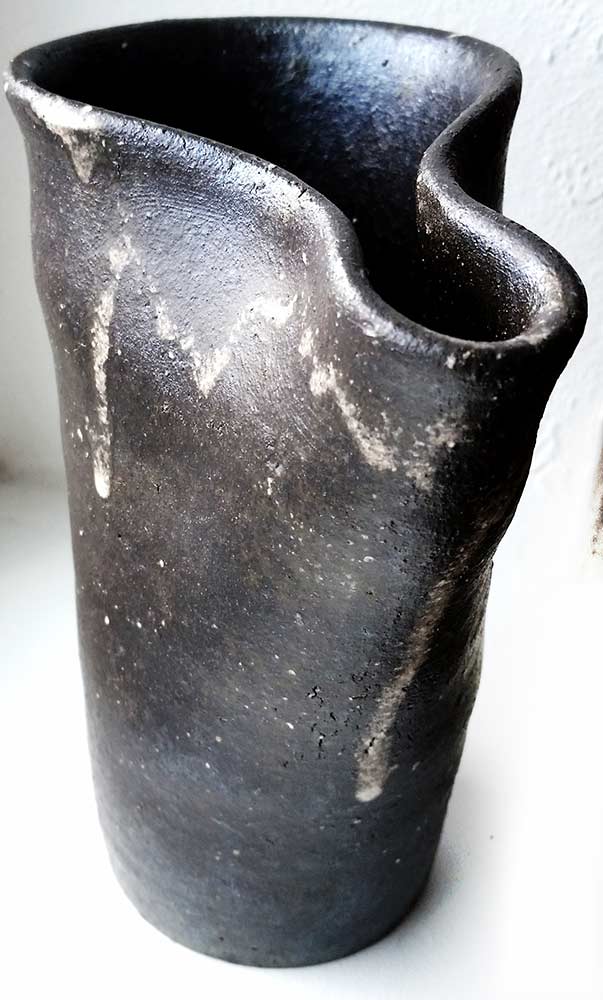
Shop Katakuchi and Sake Sets

Modern Sake Glassware
Modern sake service vessels are divers primarily past the use of Western glassware.
Vino glasses take come into prominence somewhat recently every bit they do a much better job of showcasing every bit of character a sake has than smaller traditional sake cups.
Smaller port-fashion glassware has also go more acceptable recently. Many izakaya'south in North America and the European Union have moved to this design. They offer affordability and a quality tasting feel.
For a long time, shot glasses have been a popular option for serving sake. They're also cost-effective and somewhat resemble traditional ochoko.
Lastly, strong genshu sake has become more available to Western sake fans, and with information technology the suggestion to try them on the rocks. With all of these trends, the modern sake glass has taken on an international design.
Sake in Stemware: Wine Glasses
Sake wasn't served in stemware historically.
The reasons for this are straightforward: these spectacles are of Western origin and are easy to knock over in a traditional Japanese table setting.
Merely drinking sake from a vino glass can greatly improve the sake tasting experience. They've been widely adopted by sommeliers, brewers, and sake competitions for this reason.
The Benefits of Drinking Sake from Vino Glasses
You can olfactory property and gustation sake more acutely in a wine glass. This is considering wine glasses have more capacity, headspace, and an inwardly curved pattern.
All of these glass traits contribute to aromatic intensity while holding it in the glass better for your next whiff. The larger opening likewise passes the sake more evenly across your palate, where you lot tin better evaluate the structure (texture, sugariness, dry, acidity, alcohol).
Overall, the vino glass will give yous more details about what'due south going on with a detail sake.
But that'south not ever what people want.
Downsides of Wine Glasses
Perceived intensity is probably the biggest downside to drinking sake in a vino glass for some.
Sake volition taste more delicate in smaller cups like ochoko.
Suddenly, sake'southward relatively high ABV (xiv-20% typically) becomes more noticeable. Flavors may evidence as well assertively for some, every bit well.
If you prefer your sake tasting light and mellow, you may want to stick to smaller sake cups and glasses.
Some people too merely adopt the await and experience of traditional cups. And there's nothing wrong with that.
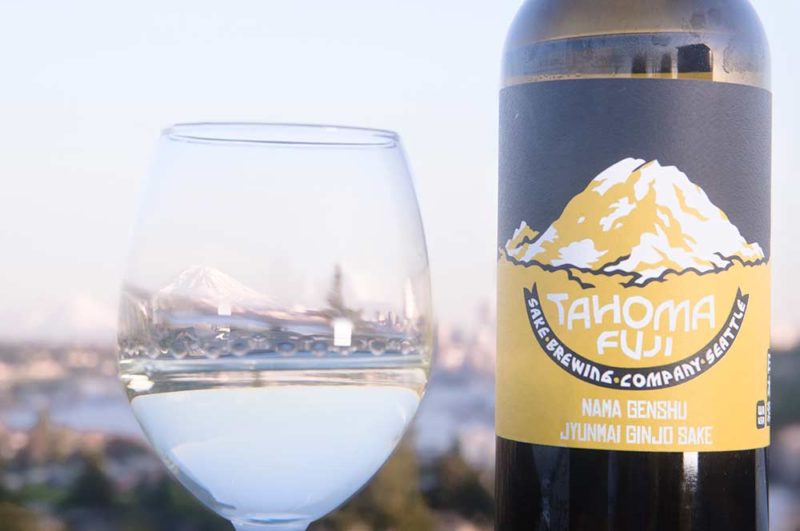
Choosing the Right Wine Drinking glass for Sake Drinking
Any wine glass will piece of work fine for serving sake.
But smaller white wine-oriented spectacles are ideal. Glasses designed specifically for effluvious vino grape varietals like sauvignon blanc and riesling are fifty-fifty meliorate. This is peculiarly truthful for fragrant types of sake similar ginjo-shu.
Aged sake (koshu) is typically effluvious and bawdy and shows really well in a Burgundy glass.
Can You lot Employ Vino Glasses for Hot Sake?
Ane of import concluding bespeak near vino glasses: they are for cold, chilled, or room temperature sakeonly.
You should not serve hot sake in this type of glass. Otherwise, your lips will feel it.
Buy Wine Spectacles for Sake: Stemware
Modest Stemware: Serving Sake in Port or Aperitif Glasses
Smaller dessert wine, fortified wine, and aperitif glasses have likewise become quite popular for sake service.
Many izakaya and sushi confined accept moved to Port spectacles or similar stemless tumblers for their chilled sake service.
Sake Tasting with Small Wine Glasses
Port glasses have a shape conducive to a proper evaluation of seishu.
They typically take a wider bowl compared to a narrower opening.
There's as well room for headspace. This helps hold and get together smell for longer, making it easier to appreciate.
The full forcefulness of the sake will be tempered somewhat by the smaller opening and moderate volume.

Can You Use Port Glasses for Hot Sake?
Smaller wine glasses, like their bigger white and red vino cousins, are not fabricated for hot sake. Doing so is a good mode to burn down your lips or crack the glass.
But they are outstanding for drinking room temperature, chilled, or cold sake.
Store Port and Dessert Wine Glasses for Sake
Shot Glass Sake
Sometime before the digital age in many parts of the Due west, ochoko may have been difficult to come up by. Shot glasses frequently filled that space as they were readily available and affordable.
They also have a nominal resemblance in shape and size to the classic sake cup. And for those reasons, they're withal sometimes used as a substitute.
Drinking Sake from a Shot Drinking glass
Shot glasses will brand a sake seem light, subdued, and soft. Detecting aroma can exist difficult. Additionally, expect sugariness to seem more pronounced.
Shot glasses are suitable for cold, chilled, or room temperature sake. Hot temperatures should be avoided in them, though most can handle gently warmed sake.
Shot Drinking glass Sake Bombs
Shot glasses are typically used to serve the infamous sake bomb. But you'll want to apply a sturdy glass and take a few precautions.
The nearly important matter to avoid is super hot sake and cold beer.
I've seen shot spectacles filled with pipe hot atsu-kan used for sake bombs then dropped into cold Sapporo. They usually don't break. Buy perchance one out of ten cracks and drinking glass shards can and do get produced. Y'all don't want to drink that.
If you must, let the beer become a niggling warmer or the sake a piddling cooler.
Buy Shot Spectacles for Sake
Rocks Glass: Genshu Sake Glasses
Sake in rocks or Old Fashioned drinking glass is not something that seems obvious. Cocktails and Western spirits are the original purpose of this glass.
Drinking Sake from a Rocks Drinking glass
Rocks spectacles aren't bad for appreciating cold sake. They're sort of like large guinomi.
There'south a lot of headspace and a large book. The structure and flavor of the sake are all there when tasting in a rocks drinking glass. All the same, the straight sides don't hold the volatile aromatics well.
This makes it merely an ok choice for appreciating effluvious seishu like many ginjo-shu.
Where rocks glasses have come into style is with undiluted (genshu) sake on the rocks. Bottled at full strength (or near), genshu is oft between 18% and 20% booze past volume. And some can reach equally high equally 22% ABV. That's pretty hot.
Then a little ice isn't ever a bad idea to temper the estrus and ability.

Drinking Sake from a Rocks Glass
Sake Cups: How Design Impacts Olfactory property and Sense of taste
There'southward more than to sake cups than meets the centre. In fact, the shape and thickness of a loving cup will have a large impact on how sake volition odour and taste.
Ane of the fun things well-nigh being a sake fan is the flexibility it has with serving temperature plus all of the unique serving vessels that have developed to savour this range. Served chilled in a large guinomi, sake can often seem similar to white vino in construction and flavour.
But the aforementioned sake in a smaller ochoko may seem comparatively soft and delicate. If this modest loving cup has a thin lip, it might not exist groovy for serving the sake piping hot like and so many American's seem to love either.
This section will teach y'all the design principles that affect the drinking experience and what cups are best for cold and hot sake.

The inverse of this: a wide opening and a narrow bowl leave niggling surface area for sake to emit smell while allowing information technology to more than freely escape the glass. Direct sides fall in-between. The amount of headspace is also key. The more space between the sake and the temper above– the more aromatics tin remain in the glass for your next sniff. Lastly, overall size amplifies the above characteristics. Large cups have more surface area and bigger openings equate to more aroma, more perceived acidity and body, and less sugariness. Smaller cups volition take the reverse impact and make a sake seem lighter.
Sake Cup Shape, Size, and the Tasting Experience
The tasting experience of all sake will be profoundly influenced by the shape of the cup or glass it'southward served in. There are many reasons for this.
Sake Loving cup Size Matters
The overall size of a vessel has a big impact. Smaller cups concord less sake and therefore accept less sake emitting olfactory property. Seishu in small-scale cups will therefore seem less aromatic than when served in larger glassware.
Similarly, smaller cups tend to produce less aroma for another reason: less headspace. The space between the sake and the lip of the drinking glass may seem empty, merely information technology's valuable real estate for holding pretty effluvious compounds before they bladder off into the temper.
Shallow cups often accept footling headspace and can make sake aromas seem balmy.
Width of the Basin vs the Mouth
Another cardinal design chemical element affecting sake glass behavior is the size of the bowl (maximum width) compared to the size of the opening. Wider bowls with narrower openings trap aromatics much better than straight-sided or fluted glassware.
Finally, the size of the opening besides impacts the tasting experience of a sake. The wider the mouth of the loving cup, the more sake will period over the entire palate.
This volition consequence in a more full-flavored experience and one where acerbity and alcohol volition appear more pronounced. The wider oral fissure will frequently brand a sake seem a little less sweet.
The reverse of this design appears with smaller cups. A narrow opening tends to make sake seem lighter and sweeter.
Big Cups vs Small Cups
Taking all of these factors together, one can make some broad assumptions about sake glassware.
Overall, the smaller the cup or glass, the lighter, sweeter, and cleaner a sake volition appear. Aromas volition be correspondingly subdued.
Larger glassware will make a sake seem more fragrant, firmer, more acidic, drier, and richer.

Hot and Cold Sake: How to Choose the Right Loving cup
When selecting a cup for your sake, the service temperature should exist a primal consideration. If y'all like your sake cold, chilled, room temperature, or even lukewarm, and then just about any glass will work fine. Only for hot or warmed sake you'll want to exist more selective.
Imagine drinking hot coffee or tea from a water glass. You wouldn't exercise that right?!
The reason is the drinking glass is very thin and not insulating. Information technology could break, burn down your manus, and would probably burn your lips.
A thick and heavy mug or teacup is designed with purpose down to the fat and rounded lip and ceramic materials.
And so a general rule for choosing a cup for hot sake: brand sure the cup is reasonably thick and is ceramic.
Materials for Hot Sake Cups
Stoneware and porcelain are fairly well insulated and will not transfer rut through the sake loving cup or flask as easily as other common cup materials.
Wood, and some metal designs, will piece of work just fine but aren't platonic.
There are sturdy tempered glass cups and carafes on the market designed for warm and hot sake if you're willing to dig effectually for them. Otherwise, information technology'due south all-time not to utilise glass for hot sake.
Follow the Japanese Bar on Social Media
Connect with our latest posts, the newest Japanese drink info, and get exclusive promotional offers. Level upwardly your sake IQ!
0 Response to "How Many Glasses Come in a Case of Old Fashioned Glasses?"
Post a Comment